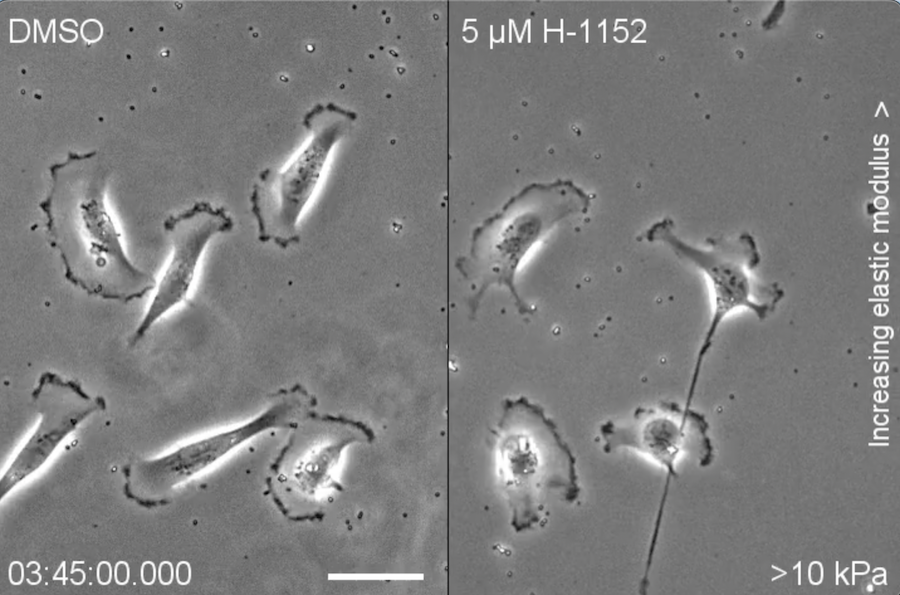Cancer cells can be drawn to certain mechanical “sweet spot” conditions, according to a global team of researchers headed by University of Minnesota Twin Cities engineers. This discovery offers fresh insights into how cancer spreads throughout the body. The discoveries may aid researchers and engineers in their efforts to comprehend cancer progression and develop more effective cancer therapies.
 University of Minnesota Twin Cities engineers have discovered that cancer cells invade the body based on their environment. The discovery provides new understanding of how cancer spreads and can improve future treatments. Photo credit: David Odde Laboratory, University of Minnesota
University of Minnesota Twin Cities engineers have discovered that cancer cells invade the body based on their environment. The discovery provides new understanding of how cancer spreads and can improve future treatments. Photo credit: David Odde Laboratory, University of Minnesota
The study was released in the transdisciplinary, peer-reviewed journal Nature Materials.
In a previous study, a team led by researchers at the University of Minnesota discovered that cells can sense the stiffness of their surroundings, which can range from stiff (bone tissue) to soft (fatty tissue) to medium stiffness (muscle tissue), and that their ability to move is influenced by that environment.
According to their findings, cells can have a “sweet spot” of stiffness where they have stronger traction and can move more quickly. This stiffness is neither too firm nor too soft.
In this investigation, the researchers discovered that the stiffness of the surroundings affects not only the speed but also the direction in which cells migrate.
The University of Minnesota scientists identified for the first time that cells can go toward a “sweet spot” that is more in the center, contrary to the long-held belief among scientists that cells would always drift toward a firmer environment.
This discovery challenges the current thinking in the field, which is that cells only move toward stiffer environments. I think that this finding will change how people think about this phenomenon. Our mathematical model predicted, and we’ve shown through experiments, that cells actually can move toward the softer side.”
David Odde, Study Senior Author and Professor, Biomedical Engineering, University of Minnesota Twin Cities
Odde and his colleagues examined breast and brain cancer cells for the study. They placed cells between two environments—one that was stiffer and one that was softer—and watched to see where they gathered.
The study team also discovered that some cells, such as the breast cancer cells they examined, have a feedback mechanism that allows them to cling to stiffer settings more tenaciously. This finding clarifies why many earlier studies have shown cells shifting toward the stiffer side. However, the cells will incline further toward the middle if you genetically disable that function.
“We’re basically decoding how cancer cells invade tissue,” Odde said. “They don’t just move randomly. They actually have particular ways in which they like to move, and if we can understand that, we may be better able to trip them up.”
The researchers’ next step will be to use this knowledge to create a simulator that displays how cancer cells migrate throughout the entire tumor. This will enable them to more accurately forecast how cells would move in different situations.
Cancer cells migrating toward a "sweet spot"
The above video shows the migration of cancer cells over a span of 24 hours toward a "sweet spot" in the middle of stiff and soft environments, represented by the gray box at the bottom. Video credit: David Odde Laboratory, University of Minnesota
Source:
Journal reference:
Isomursu, A., et al. (2022) Directed cell migration towards softer environments. Nature Materials. doi.org/10.1038/s41563-022-01294-2.